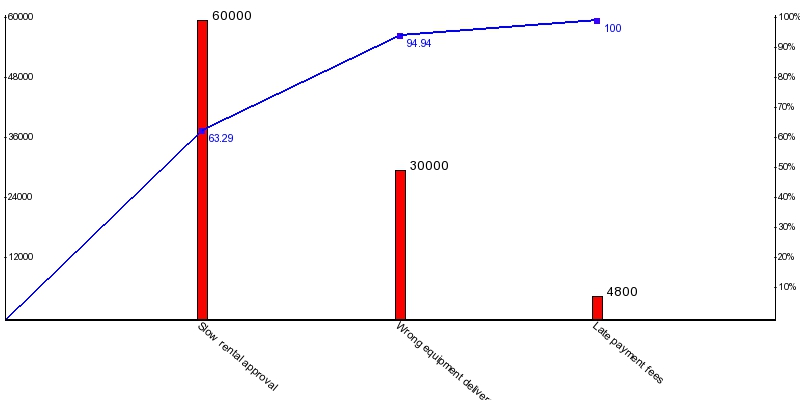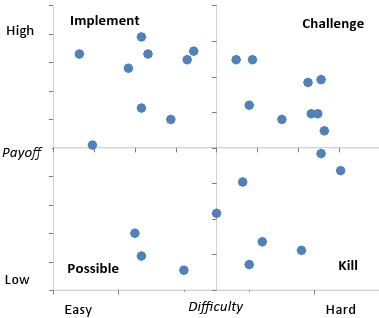Issue Documentation and Impact Assessment
- Understand impact of the issues.
- Techniques for impact assessment.
Issue Register
- Provides a more detailed analysis of individual issues and their impact.
- Determine how and to what extend each issue is impacting on the performance of the process.
- Quantitatively = Time/money lost.
- Qualitatively = Perceived nuisance (hinder) to the customer or risks that the issue entails.
- Fields:
- Name of the issue
- Short, 2-5 words, understandable by all.
- Description
- Short, 1-3 sentences, focused on the issue itself.
- Priority
- A number, stating the relevance relative to other issues.
- Assumptions (input data)
- Any data used or assumptions mad in the estimation of the impact of the issue.
- ex. Number of times a given negative outcome occurs.
- ex. Estimated loss per occurrence of a negative outcome.
- Over time these assumptions/estimates will be replaced with more reliable numbers.
- Qualitative impact
- Description of the impact in qualitative terms.
- ex. Impact of the issue on customer/employee satisfaction, long term supplier relationships, company reputation.
- Quantitative impact
- Estimate of the impact of the issue in quantitative terms.
- ex. Time loss, revenue loss, avoidable costs.
- Evt. extra possible resolution field in the view of process redesign.
- Examples, see page 200.
Pareto Analysis

- Impact assessment input for Pareto analysis.
- Pareto Analysis = identify which issues or which causal factors of an issue should be given priority.
- PRINCIPLE: Small number of factors are responsible for the largest share of a given effect.
- 80-20 principle ( 20% of the issues is responsible for 80% of the effect )
- APPROACH:
- Define the effect to be analyzed and the measure via which this effect will be quantified.
- ex. Financial loss for customer/business.
- ex. Time loss by the customer/process participants.
- ex. Number of occurrences of a negative outcome, such as number of unsatisfied customers due to errors made when handling their case.
- Identify all relevant issues that contribute to the effect to be analyzed.
- Quantify each issue according to the chosen measure.
- Quantitative impact column in the issue register can be used.
- Sort the issues according to the chosen measure (from highest to lowest impact) and draw a so-called Pareto chart.
a. A bar chart where each bar corresponds to an issue and the height of the bar
is proportional to the impact of the issue or factor.
b. A curve that plots the cumulative percentage impact of the issues.
- Pareto analysis focuses on a single dimension.
PICK chart

- Complement Pareto analysis.
- Each issue appears as a point.
- Horizontal axis = difficulty of addressing/fixing the issue
- Vertical axis = payoff when the issue is fixed
- Split into 4 quadrants:
- Possible (bottom left, low payoff, easy to do)
- Implement (top left, high payoff, easy to do)
- Challenge (top right, high payoff, hard to do)
- Kill (bottom right, low payoff, hard to do)

